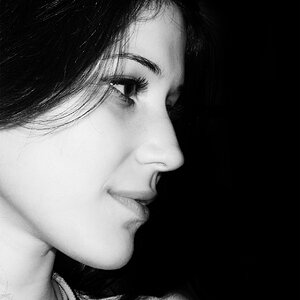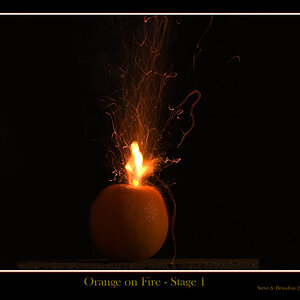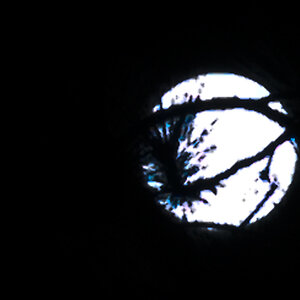DjBeau
TPF Noob!
- Joined
- Aug 13, 2007
- Messages
- 50
- Reaction score
- 0
- Website
- www.bobrinch.dk
- Can others edit my Photos
- Photos OK to edit
Hi
I know lots of people are saying that you can't tell the difference between the quality of a full frame image and a crop sensor image. Well, those people should obviously buy some glasses.
One of the things that really stands out on fullframe is the increased sharpness (in the center, anyway). The reason for this is - as far as I understand - that the pixel density is lower on a full frame which means the pixels are farther apart and do not "bleed" into each other.
Now, here's the question:
Is a 12 mega pixel full frame sensor sharper than one of 24 mega pixels? I mean, since you're cramming more pixels into a sensor of the same size wouldn't that mean bigger density and therefore more bleeding?
Or do that extra amount of pixels to define the image simply balance out the bleeding problem?
Regards
Beau
I know lots of people are saying that you can't tell the difference between the quality of a full frame image and a crop sensor image. Well, those people should obviously buy some glasses.
One of the things that really stands out on fullframe is the increased sharpness (in the center, anyway). The reason for this is - as far as I understand - that the pixel density is lower on a full frame which means the pixels are farther apart and do not "bleed" into each other.
Now, here's the question:
Is a 12 mega pixel full frame sensor sharper than one of 24 mega pixels? I mean, since you're cramming more pixels into a sensor of the same size wouldn't that mean bigger density and therefore more bleeding?
Or do that extra amount of pixels to define the image simply balance out the bleeding problem?
Regards
Beau


 (That is, downsampling an image can definitely save it. There are plenty of times when I look at an image and think "aw nuts, they moved a few millimetres, it's not sharp" and just downsample.)
(That is, downsampling an image can definitely save it. There are plenty of times when I look at an image and think "aw nuts, they moved a few millimetres, it's not sharp" and just downsample.)






![[No title]](/data/xfmg/thumbnail/37/37110-1d5d98524f9f6a8623703161610ef439.jpg?1619737882)
![[No title]](/data/xfmg/thumbnail/33/33447-c3f5563c9b8b1f19498a3062f60f92b1.jpg?1619735973)
![[No title]](/data/xfmg/thumbnail/42/42059-61b97bbebb00e6276672551f4e3b3e43.jpg?1619739995)
![[No title]](/data/xfmg/thumbnail/31/31702-59b5519e3c9a12b85ca69439a27f5253.jpg?1619734961)
